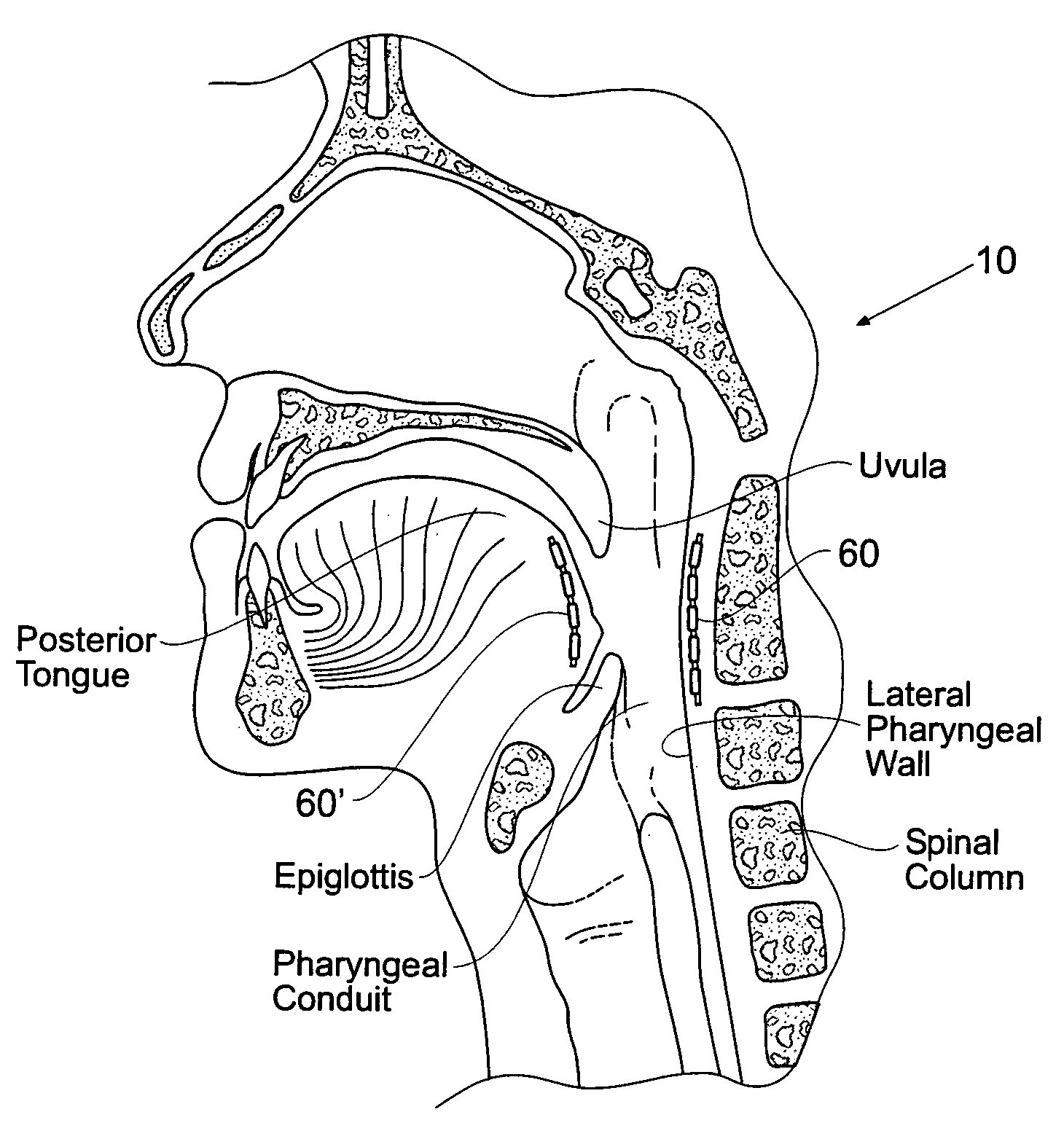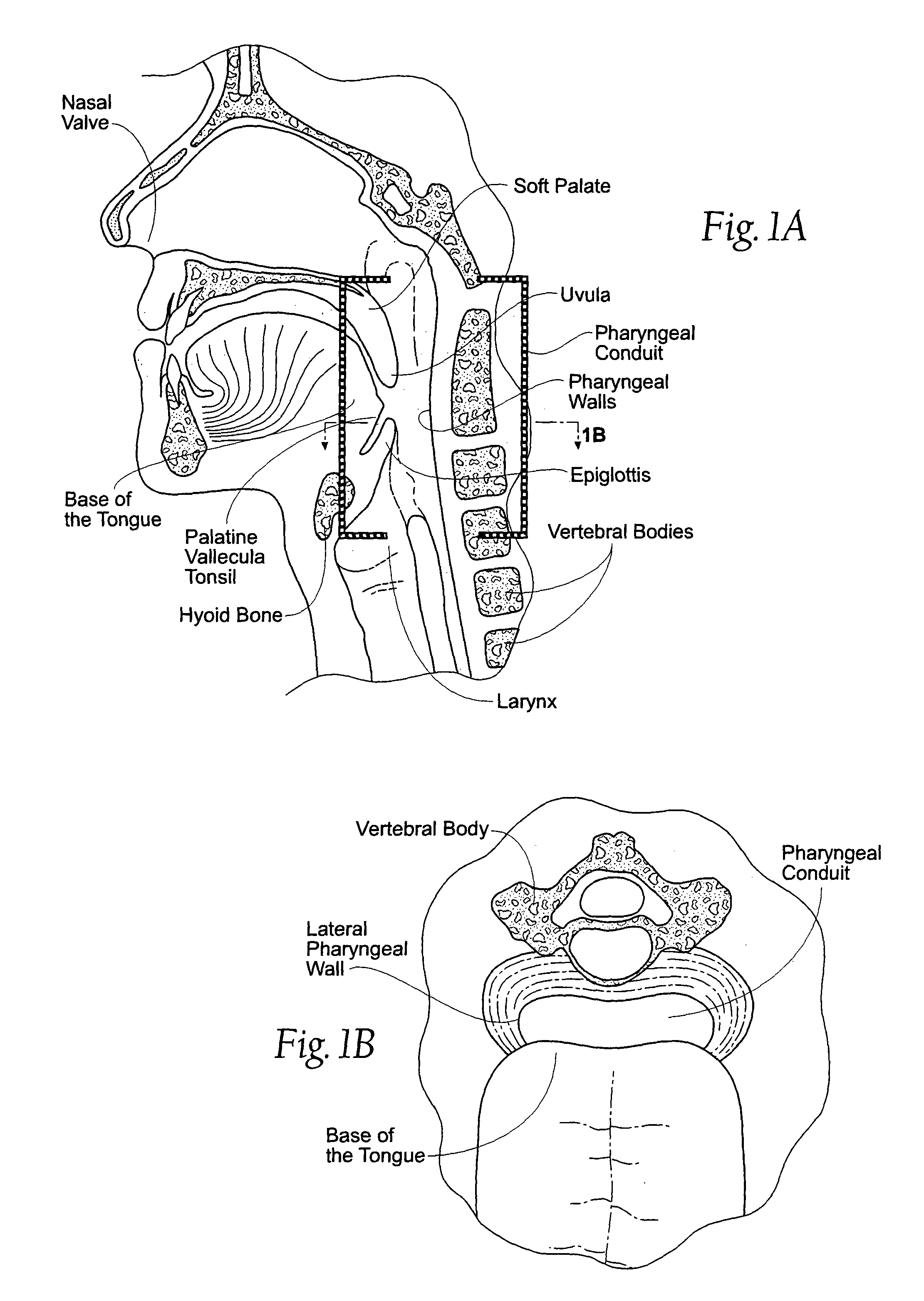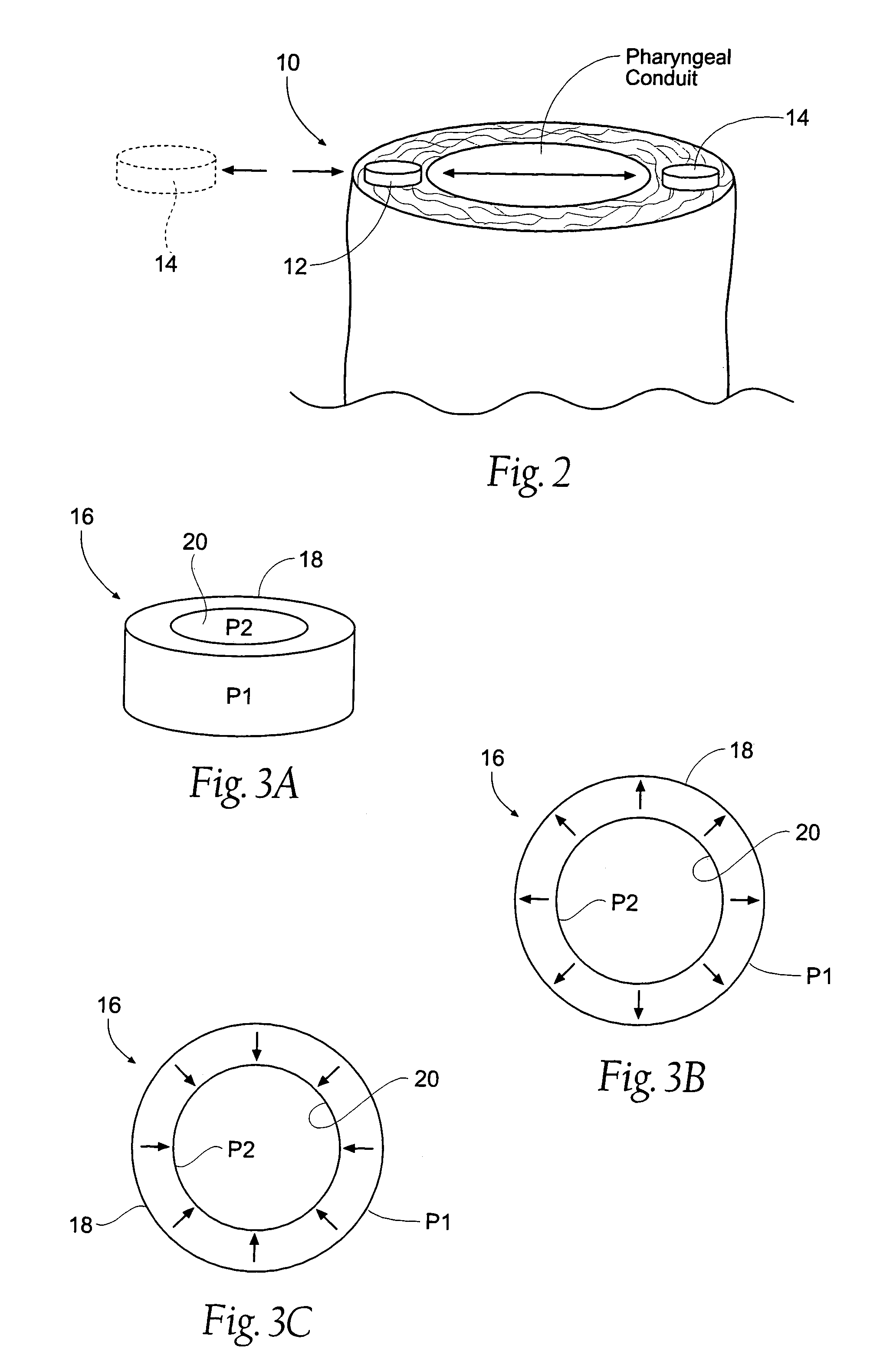Magnetic force devices, systems, and methods for resisting tissue collapse within the pharyngeal conduit
a pharyngeal conduit and magnetic force technology, applied in the field of magnetic force devices, systems, and methods for resisting tissue collapse within the pharyngeal conduit, can solve the problems of affecting the quality of life of patients, so as to reduce or prevent sleep disordered breathing events, reduce or prevent sleep disordered breathing, and simple devices.
- Summary
- Abstract
- Description
- Claims
- Application Information
AI Technical Summary
Benefits of technology
Problems solved by technology
Method used
Image
Examples
Embodiment Construction
[0056]Although the disclosure hereof is detailed and exact to enable those skilled in the art to practice the invention, the physical embodiments herein disclosed merely exemplify the invention, which may be embodied in other specific structure. While the preferred embodiment has been described, the details may be changed without departing from the invention, which is defined by the claims.
I. Magnetic Force Systems
[0057]FIG. 2 shows in a diagrammatic way a magnetic force system 10. In use, the magnetic force system 1010 resists the collapse of tissue in targeted pharyngeal structures and individual anatomic components within the pharyngeal conduit during sleep.
[0058]In its most basic form, the magnetic force system 10 comprises at least one ferromagnetic material 12 and at least one source 14 of magnetic force. The ferromagnetic material 12 is implanted in a targeted tissue region within the pharyngeal conduit. The source 14 of magnetic force interacts with the implanted ferromagnet...
PUM
 Login to View More
Login to View More Abstract
Description
Claims
Application Information
 Login to View More
Login to View More - R&D
- Intellectual Property
- Life Sciences
- Materials
- Tech Scout
- Unparalleled Data Quality
- Higher Quality Content
- 60% Fewer Hallucinations
Browse by: Latest US Patents, China's latest patents, Technical Efficacy Thesaurus, Application Domain, Technology Topic, Popular Technical Reports.
© 2025 PatSnap. All rights reserved.Legal|Privacy policy|Modern Slavery Act Transparency Statement|Sitemap|About US| Contact US: help@patsnap.com



